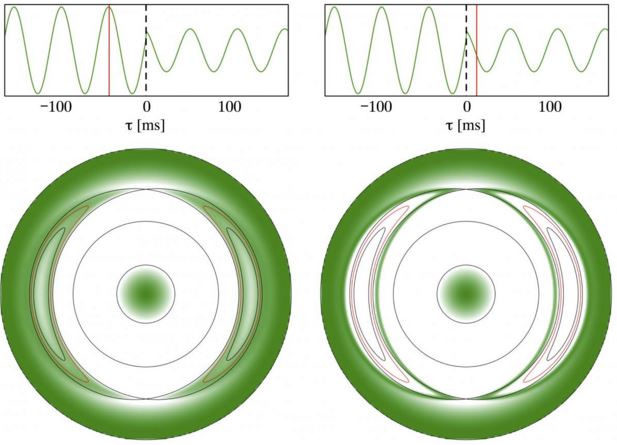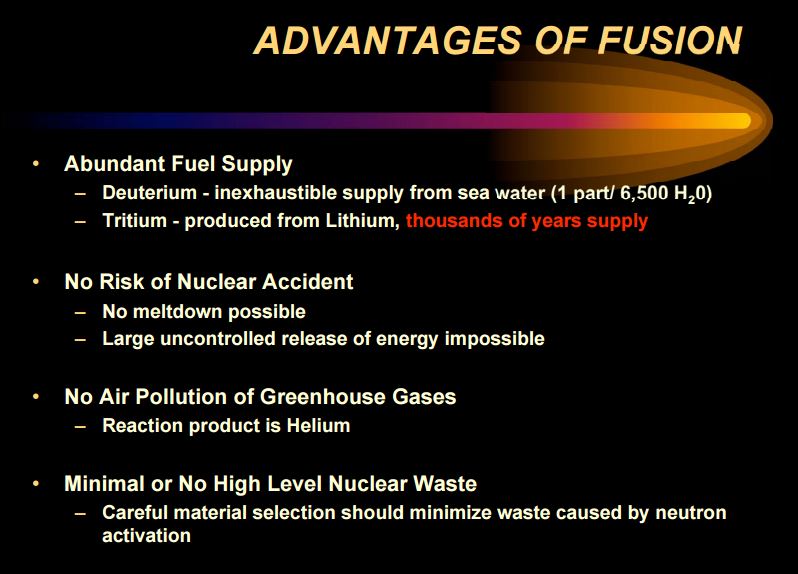Scientists from Japan and the US have made a major discovery of a new plasma confinement state in the global race to achieve fusion energy, which would completely transform how we produce electricity across the world and virtually eliminate emissions of greenhouse gases caused by human activity.
The National Institute for Fusion Science, part of the National Institutes of Natural Sciences, applied the ‘Momentary Heating Propagation Method’ to the DIII-D tokamak device in San Diego, which General Atomics operates on behalf of the US Department of Energy.
The researchers, from General Atomics, San Diego, USA; the National Institute for Fusion Science, Toki, Japan; Kyushu University, Kasuga, Japan; the University of Texas, Austin, Texas, USA; the Oak Ridge National Laboratory, Tennessee, USA, wrote about their discovery in the Nature group journal Scientific Reports.
 The green colors indicate the amplitude of the temperature variation due to the momentary heating inside and outside the magnetic island at the time slice indicated by the red lines. The dashed lines indicate the timing when adiabaticity changes. (Image: Eurekalert)
The green colors indicate the amplitude of the temperature variation due to the momentary heating inside and outside the magnetic island at the time slice indicated by the red lines. The dashed lines indicate the timing when adiabaticity changes. (Image: Eurekalert)
Fusion power – the Holy Grail
Fusion power is considered the Holy Grail of energy generation. With it, we would have an infinite supply of fuel, at essentially no cost on an energy production scale. Fusion energy would solve two problems: 1. We would no longer be releasing so much greenhouse gas into the atmosphere and warming up the planet. 2. There would be no more need for oil or gas exploration, or digging coal mines, etc.
According to General Atomics:
“Fusion is the process that powers the sun and the stars. It is the reaction in which two atoms of hydrogen combine together, or fuse, to form an atom of helium. In the process, some of the mass of the hydrogen is converted to energy. Fusion has the potential to be an inexhaustible source of energy.”
Plasma confinement research being conducted globally
In their quest to achieve fusion energy, research on very high-temperature and high-density plasma confinement by magnetic fields is being carried out across the world. Plasma in this text means ionized gas.
In a magnetically confined plasma, as the plasma’s core temperature rises, the flow of turbulence (disturbed plasma) emerges. This turbulence does not stay where it is generated, but moves circumferentially like a series of waves.
 Image: General Atomics.
Image: General Atomics.
In magnetically confined plasmas, magnetic islands (twofold confinement areas) exist. In these areas there is no temperature gradient that results where the turbulence began.
That is why the turbulence generated outside the magnetic island, where temperature gradient exists, enters the magnetic island, and the confinement state within the magnetic island will be determined according to the intensity of turbulence.
In future fusion plasma research, it will be vitally important to improve the magnetic island’s confinement state. Even in solar plasmas, solar flare emissions suggest that magnetic islands may exist. Thus, research on turbulence within magnetic islands is a very important topic.
Momentary heating propagation method
Dr. T. Evans, a DIII-D senior researcher, Prof. Katsumi Ida, assistant professor Tatsuya Kobayashi, and the LHD (Large Hadron Collider) experiment group with Professor Shigeru Inagaki at Kyushu University, have discovered for the first time ever a new confinement state within a magnetic island by applying the “momentary heating propagation method” to the DIII-D plasma.
The ‘method’ allows the adiabaticity (plasma confinement performance) to be diagnosed from the amplitude of temperature variation and the propagation speed caused by the momentary heating.
The researchers say their discovery, because it is essential for enhancing the confinement of the fusion reactor plasma, will be a major compass pointing in the direction of future fusion research.
In cases with high adiabaticity (good confinement performance) within the magnetic island, the propagation of heat that tries to get in from outside slows, and at the same time temperature variations become smaller.
Accordingly, by briefly heating the plasma and diagnosing the amplitude of temperature variations and the propagation speed, we learn more about the confinement performance.
Previously, experiments in the Large Hadron Collider found “that confinement performance inside the magnetic island is good (the adiabaticity was 7 times greater than outside).”
This time, a ‘particularly superlative magnetic island’ was discovered in the DIII-D plasma. Moreover, the self-regulated oscillations were also discovered between two different adiabaticity states, the ‘good state’ (adiabaticity is 5 times greater)” and ‘an even more superlative state’ (adiabaticity is 40 times greater).
Accompanying the self-regulated oscillation, the researchers observed for the first time a state in which variations in temperature were transferred within the magnetic island and one in which temperature variations were small with repeatedly alternating cycle.
This self-regulated oscillation means there is a variety in adiabaticity (the performance of plasma confinement).
The authors wrote:
“This discovery provides new guiding principles for producing a magnetic island with good confinement condition, and will greatly contribute to fusion research. Further, this newly discovered mechanism may also be significant for interpreting space and solar physics effects, and we anticipate the wide circulation of these results academic research.”
Related link (in Japanese).
A team of American and Chinese scientists says it is one step closer to achieving fusion energy.
Citation: “Self-regulated oscillation of transport and topology of magnetic islands in toroidal plasmas,” K. Ida, T. Kobayashi, T.E. Evans, S. Inagaki, M.E. Austin, M.W. Shafer, S. Ohdachi, Y. Suzuki, S.-I. Itoh, and K. Itoh. Scientific Reports 5 (2015) Article Number: 16165 (open access). 4 November, 2015. DOI: 10.1038/srep16165.
Video – What is fusion energy?
This video explains what fusion energy is by showing how two or more nucleons merge or fuse together to create something more powerful and meaningful.

